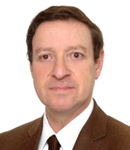
Word from the President

Long-term operation in Europe

|
At the European Nuclear Energy Forum (ENEF) in Prague, in May 2013, the European Commission presented long-term scenarios for the European energy mix. In some of these scenarios nuclear energy accounted for 20% of the EU’s electricity generation by 2050. This represents a decrease with respect to the 2011 level (28% of electricity generated by approximately 135 nuclear reactors in the 28 Member States), but it is still a substantial amount. By 2015, many of these reactors will have reached an operational age of over 30 years. If we want to keep to our target of generating 800 TWh of nuclear generation in 2050 we need to do 3 things: |
-
We need to extend the operation of at least 100 European nuclear reactors to more than 40 years within the time-frame of 2025-2045.
-
We must create the industrial capability to build 100 reactors in Europe for the period 2035-2055. That means the capability to put online 5 reactors per year in Europe during this period.
-
We must reduce, as far as reasonably practicable, the gap between the safety level of generation 2 reactors with an extended lifetime beyond 40 years and the safety level of generation 3 reactors, which will be used for European new build. One very important safety objective for nuclear reactors beyond 2020 is to prevent the occurrence of severe accidents and, should one ever occur, to avoid the long-term contamination of large territories.
The scientific and technical expertise of our 23 European member societies will be of great value to the accomplishment of these 3 objectives, in particular objectives 1 and 3. Without wishing to list all the possible contributions that we can make, allow me to provide readers with a few concrete examples: We can provide the expertise in material sciences required to understand the ageing processes and the lifetime limiting factors of reactor vessels and containment buildings. This is a field where many European laboratories have critical capabilities. They specialize in analyzing a variety of ageing processes affecting metallic parts, concrete structures and the dielectric and organic materials contained in cables and electric equipment used in replaceable and non-replaceable nuclear power plant components. Over 1000 scientists and research engineers collaborate within the European Energy Research Alliance (EERA), which is supported by the Member States and by the European Commission.
For objective 3, severe accident research - which is not a new field in Europe - has evolved significantly with the launching of new projects for Light Water Reactors. One topic concerns the comparison of two technical solutions used by Generation 3 reactors to manage the molten corium in the reactor containment: the so-called ‘in-vessel retention’ technique, which originated in America, and the ‘core catcher technique’ proposed by European and Russian designers.
Another technical topic concerns the analysis using specialised computer models of the severe accident sequences that affected the 3 Fukushima units and the stabilisation of the corium after partial erosion of the concrete basemat. These topics will be revisited with the availability of new data. our European nuclear societies and scientists can propose new ideas and contribute significantly to the research and to the industrial projects.
For objective 2, nuclear scientific societies have a different contribution to make: they can provide education, training and knowledge sharing resources for the next generation of operators, design and construction engineers, technicians and nuclear safety analysts.
But whatever form it might take, we expect an important contribution made by our nuclear societies to the future of long-term operation in Europe and to a general increase of the safety level of our nuclear reactors.
Noel Camarcat,
President of the European Nuclear Society
|

